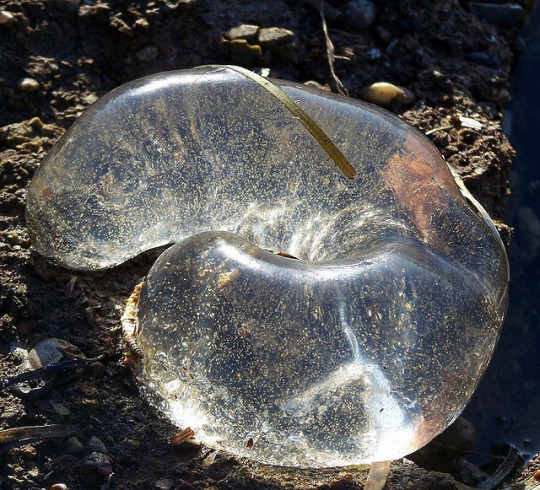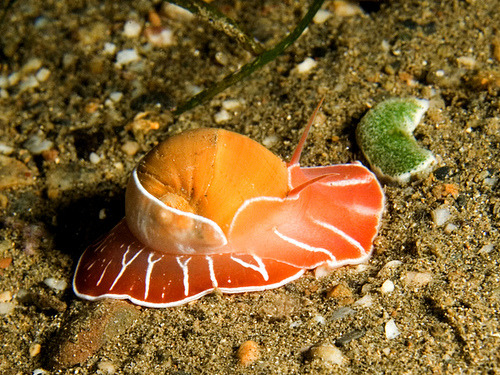#Naticidae
Text
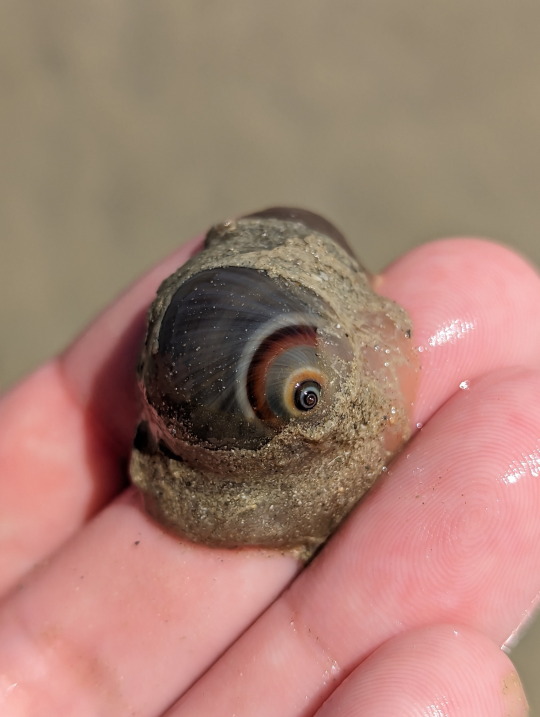
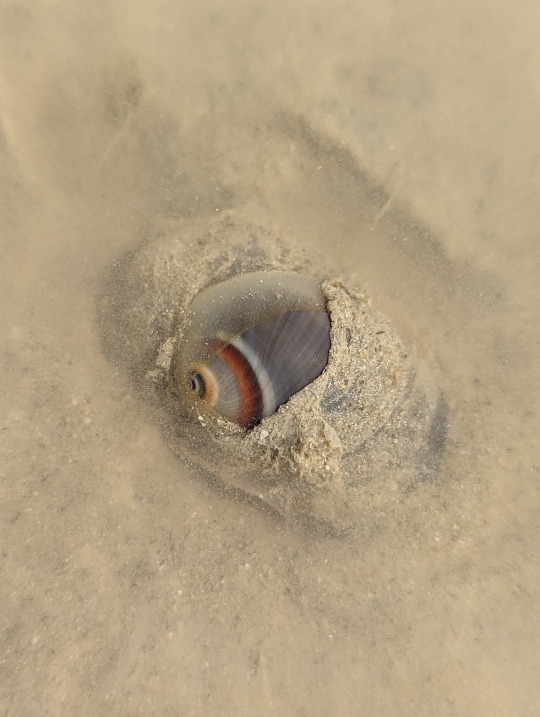
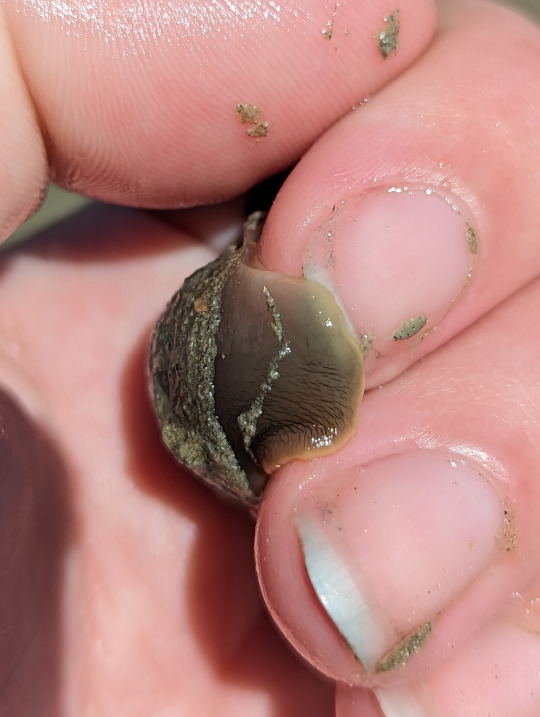

Moon Snail found foraging in the sand.
09/09/23 - Caenogastropoda: Conuber sp.
QLD:BRB - Clairview, beach
#invertblr#invertebrates#Conuber#Naticidae#Moon Snails#Caenogastropoda#Caenogastropods#Gastropoda#Gastropods#Mollusca#Molluscs#snails#snailblr
117 notes
·
View notes
Note
Moon Snail question for you! Are the moon snails you'd get at a pet store to put in an aquarium the same kind as the Meaty Motherfucker (affectionate) on your hand there? Or is it a case of the same common name applied to two animals? Could an aquarium moon snail ever get that big?
I have actually never seen a moon snail at a pet store, so it might be a case of other snail species with the same common name. All of the true moon snails (Naticidae) are burrowing (so not great for a display animal in a home aquarium) and highly carnivorous (and thus likely to eat tank-mates) so I don’t know how popular they would be as pets.
The particular snail I’m holding in Moon Snail Mtuesday is a northern moon snail, which is one of the largest species and are definitely not kept as pets very frequently because they’re cold-water animals who need a pretty large aquarium and live food. So even if there are true moon snails in the aquarium trade, they’re probably a smaller species and thus will never be quite as chonky as him. Although there are some aquarium snails that get decently big, like apple snails!
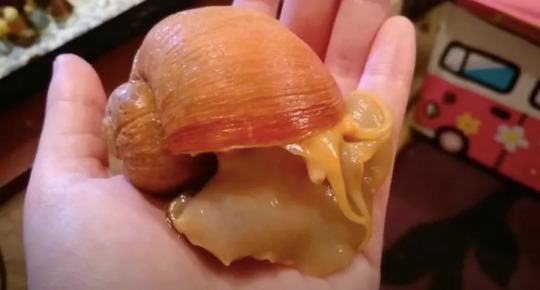
26 notes
·
View notes
Note
I'D LOVE TO HEAR ABOUT YOUR SPLATOONS AND SOME BNHA OCS OF YOUR PICK!! also interested in dragon ball too ngl 👀
i hate tumblr so fucking much i was writing this up for an hour and it deleted
splatoon
i have a set of octolings since splat1 that i really like!
ringo, tako, octavia, mimi, quill, pan
but pan is gonna be revamped so i’ll figure out her deal soon
ringo tako octavia and pan are from octo valley
quill is from octo canyon
mimi is from the splatlands
i also have a budding splatband called out of shoal!
the lead is an octoling who came to the surface after hearing calamari inkantation and got paris syndrome so they made a punk rock band about it
there’s also a pencil urchin who is a vocalist and a shellback crab on drums :] might add a jelly as well
i want to make idols also. someday
bnha
here’s the main gang class 2-b!

(they were 2-a before horikoshi showed 2-a in the manga 💀)
my favorites of each row: atsuko kinzoku, koharu nakamoto, miku ueno, emiri abe
atsuko kinzoku (second to last, first row)—quirk melting point! with a touch of her hands she can melt any meltable object and consequently control that molten mess :] more extreme melting points are harder for her to do and cooling herself down can be an ordeal. she went to a dance school and was well versed in ballet before suddenly pivoting to u.a. and hero work. her hero name is tungsten!
koharu nakamoto (middle, second row)—quirk tear jerker! she can force people within a certain radius to experience certain emotions! she can do negative emotions much easier than positive, and these changes often make her feel the same way. she went to the same middle school as toga. she is also very into decora kei :^) did not give her a hero name oops but she is the magical girl hero
miku ueno (last, third row)—quirk sleepy sheep! her hair is actually clouds that when used makes the target extremely drowsy. as a drawback she herself is also rather sleepy most of the time :( her first hero name is bo sleep, with a themed outfit, but after she graduates and the nature of her work changes, she becomes somna
emiri abe (second, last row)—quirk animate! emiri has charcoal like pads on their fingers, which allows her to draw. once a drawing is completed, it can come to life and then be used as a tool. effectiveness is tied to how clear a drawing is. the medium is water resistant but can be washed away. emiri’s hair is naturally blonde but is more ash colored because of how often they put their hands in their hair 💀 in public, emiri wears gloves. hero name ani!
(bonus! hideyoshi maki + kanon katou)
hideyoshi (second, top row)—quirk lucky lottery! he has bands on his arms and marks on his face that appear when good things naturally happen to him. as its stored, he can then expend them to sort of force events to happen as long as there is a chance of it happening. less likely events requires him to spend more luck. it is also automatically used to keep him out of harms way. unrelated to his quirk, he has doll like limbs :^) he’s the lucky hero—chance!
kanon (right of emiri)—quirk stereo! she gains super speed and strength depending on the qualities of the music she listens to! she is also emiri’s gf :] kanon has vitiligo as well, which is being hidden at that point in time. she fails the hero license test going against her older sister kotone and partner chiyo, who go to seiai academy, but eventually gets her shit together and becomes the wabisabi hero—shuffle 👍🏽
dragon ball
i had several saiyan ocs (maiz, kohn, aspara, pumpki, etc) when i was in hs but i havent drawn them since so here are the ones i have!
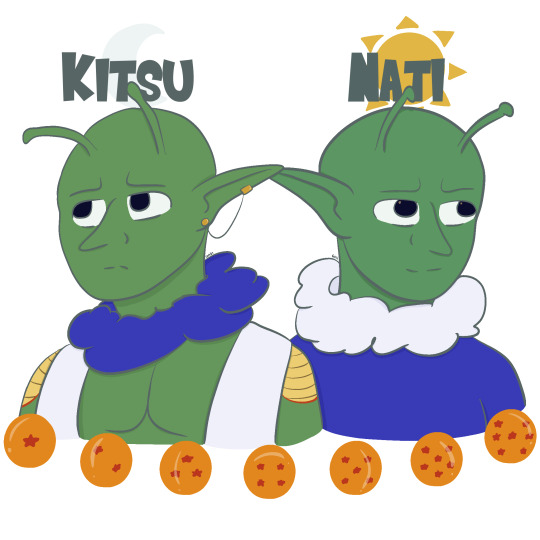
nati (from naticidae, genus of moon snail) and kitsu (from tsuki, moon) are my namekian ocs! they are bonded in the same was dende and cargo were.
unfortunately they died in the namek saga, and were later revived on earth. during that wait for the namekian dragon balls to be used again, they explored earth and decided to then explore the rest of universe 7 to see what’s out there :D
nati is a dragon clan namekian! they have a shitty keychain esque set of dragon balls that aren’t capable of much besides wishing for the return of a lost sock. they think its cute but don’t use them often because of the hassle of collecting.
kitsu is a warrior clan namekian! he died protecting nati on namek and as a result has become very guard dog-y regarding them. you know how it is. was initially reluctant about not going to namek with his brothers.
i’m still waffling about who but while hopping from planet to planet one of them gets gravely injured to the point where fusion was the only option available to them. as a result this fused namekian has extreme survivors guilt and is reluctant to return to namek. (though they may eventually do to see if porunga can unfuse them)
since we know that zeno erased like 6 universes before the universe survival saga i wanted to make a set of ocs from one of those erased universes (god of destruction, angel, supreme kai). i did not get far in that all tho 💀 only designed the angel and i don’t think they have a name. but i probably wouldve named them kesa (from sake, doubleish meaning with the negative conjugation of kesu, to erase)
#lakimusings#gari answers#mutual chatter#gari’s ocs#squid thoughts#bnha hours#real dragon ball hours#that genuinely ruined my mood#its 4am i don’t want to spend another hour writing this#if anyone wants to learn more i might be able to remember what i said in the first place#but i did have a lot more about my splat ocs written. i just got tired#oh yeah i wanted to add fun facts about some of them#miku originally had a different quirk entirely called weather cloud#i remembered this when combing through to make sure i wasn’t missing anything re: quirk description but she used to have#a kind of laktiu-like quirk#her current quirk is named after the paper mario item and the japanese name i figured out also just straight up uses the same japanese name#but i like cloud 9 as a name also. conflicted#kanon’s quirk also allowed her to control elements instead but i thought that was too complicated#kotone’s quirk only makes her faster with music and chiyo has an ant quirk (small + ant strength)
6 notes
·
View notes
Text
Planetary History
Strix is nearly the same age as Earth, but evolved along a very different path. Because the Xaraka have not labeled many of the past time periods, I have divided them into two categories; pre and post multicellular life, based upon fossils I have examined.
Pre-Multicellular Life
4.4 billion years ago: Strix and its solar system forms.
4.2 bya: Oceans cover much of the surface of Strix.
4 bya: First fossil evidence of unicellular life.
3.6 bya: The likely date of the last common ancestor between the Moon Sea fauna and Great Southern Sea fauna.
3.1 bya: Massive volcanism coupled with the warming sun results in global drying. The oceans begin to recede along the equator, forming the Northern Sea and the Southern Sea.
3 bya: Unicellular red plants exist in the south.
2.8 bya: First evidence of multicellular life.
Post-Multicellular Life
2.7 bya: The first mats of Viridia begin to cover the Northern Sea, oxygenating the atmosphere.
2 bya: Simple multicellular animals begin to diversify in the Southern Sea.
1.8 bya: Tadpole-like relatives of the Plantimals, known as Naticidae, thrive in the North.
1.5 bya: Continental drift begins to pull apart the eastern and western plates, creating the vast rift valleys of the Canyon Fields.
1.2 bya: Planetary drying continues, isolating small seas in the basins of the Salt Desert and the Canyon Fields, as well as the Moon Sea and Great Southern Sea.
1.1 bya: Red plants evolve into larger forms, developing into seaweed-like varieties.
900 mya: In the Canyon Fields Sea, strange animals begin to evolve.
750 mya: The Salt Desert Sea dries.
600 mya: The Naticidae die off from unknown causes, allowing the Plantimals to diversify into new, more mobile niches.
580 mya: Red plants move onto land.
550 mya: A diversification of animal life in the Southern Sea. Viatora, Cryptidae and Ossaforms all appear in the fossil record.
475 mya: The Canyon Field Sea dries, killing off the native species.
460 mya: The Plantimals move onto land.
440 mya: In the Southern Sea, aquatic Viatora are thriving in the shallows and reaching massive proportions.
390 mya: Large Viatora go extinct due to a drop in sea levels.
375 mya: Ossaforms fill vacant niches, diversifying and growing larger than ever. Red plants reach the Moon Sea Basin.
330 mya: Viatora move onto land.
320 mya: Carnivorous Ossaforms follow their Viatora prey onto land.
300 mya: A mass extinction occurs, wiping out nearly 80% of species, caused by a large volcanic eruption which blocked out sunlight for many years.
280 mya: The biped Ossaforms split from the quadrupeds. Viatora evolve flight and begin to utilize atmospheric moisture.
260 mya: The planetary drying slows. The climate begins to become more stable, with predictable seasons and permanent pools appearing in the aquifer basins.
230 mya: The secondarily sedentary Plantimals appear in response to a stabilizing climate. In the south, large Ossaforms begin to diversify. Quadrupeds dominate.
210 mya: The ancestors of Auranauts and Papyracetae take to the air. The first fossil evidence of buoyancy bladders.
200 mya: Terrestrial Viatora reach the Moon Sea Basin and begin to decimate local plants who had previously had virtually no predators. Up to 40% of native species go extinct.
175 mya: Survivors of the Plantimals and Viridia undergo an arms race with their new predators, evolving into strange new forms.
155 mya: Fluctuations in Strix’s orbit cause several centuries of abnormally high rainfall, flooding areas of the planet and causing a mass extinction of roughly 60% of species, including many large quadruped Ossaforms.
154 mya: Seasonal rainfall returns to normal. Rivers and lakes in previously uninhabitable regions allow migration between the northern and southern hemispheres.
150 mya: The flooded deserts dry, isolating the Moon Sea Basin and Southern Sea Basin once again. Bipeds diversify in the absence of dominant quadrupeds.
120 mya: In response to the new Ossaform predators, Plantimals grow to unprecedented sizes.
100 mya: Secondarily aquatic Viatora appear in the Moon Sea Basin.
90 mya: Rostertia evolve on the plains of the Southern Sea.
75 mya: Serrata evolve.
50 mya: A mass extinction caused by prolonged volcanic eruptions in the Western Rise. Roughly 70% of species in the north die out, Ossaforms being hit the hardest. In the south, 50% of species die.
40 mya: Magnipods evolve.
37 mya: Rexidae evolve.
20 mya: A second evolution of flight occurs in the ancestors of Terebroids.
10 mya: The lineage of Xarakoids splits off the Rostertia.
5 mya: Xarakoids evolve a bipedal stance.
1.5 mya: The Xaraka evolve.
1.2 mya: The first recorded tool use and controlled use of fire.
50,000 ya: Domestication of Zandrakes occurs.
25,000 ya: First written language, preserved jewelry which resembles modern day heritage markers.
15,000 ya: First permanent settlements around the Great Southern Sea.
7,000 ya: Evidence of temporary settlements in the Canyon Fields.
5,000 ya: The first settlements in the Moon Sea basin.
2,500 ya: Modern plant-based canvases are developed, and quickly replace animal skins for clothing and tent material. Plants begin to be farmed.
500 ya: The civilization around the Moon Sea falls.
117 ya: A spacecraft crash-lands on Strix, informally introducing the Xaraka to the Galactic Accord.
30 ya: The first Xaraka student is accepted into an interplanetary school.
Present day: Echo the human biologist and friends are studying life on Strix.
2 notes
·
View notes
Text

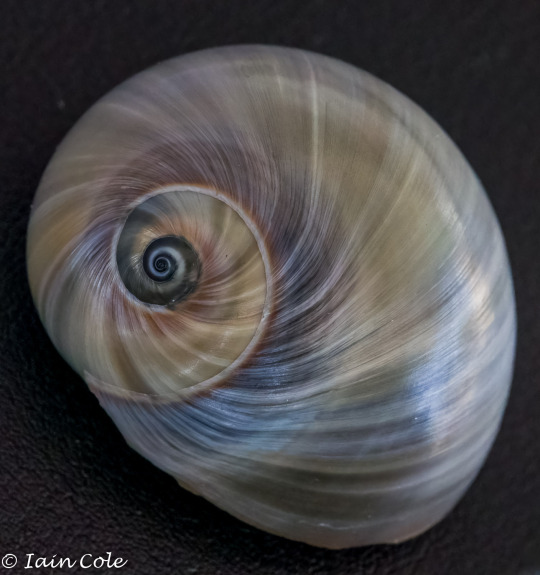
Spiral eye
(On my travels)
Naticidae shell, Seaforth. I love the colours. This one had not yet been colonised by a hermit crab
#original photographers#nature photography#wildlife photography#Naticidae shell#Sand Snail Shell#macro#macro photography
76 notes
·
View notes
Text
Moon Snails

🐚 Moon snail seashells belong to a species of predatory sea snails from the Naticidae family.
🐚 Although Moon Snails vary in size and color, they are round, slightly coiled, and share a spiral shape design.
🐚 Moon snails are also known as Necklace shells and can be used as a protective talisman or as wards for your home.
Associations:
Cycles
Protection
Survival
Intuition
The Moon
Magical Uses:
These seashells can be used to -
Protect you and your loved ones.
As Wards for your home.
To promote peace and tranquility during meditation.
As a talisman when worn as jewelry.
As a small flower pot.
As an altar tool to represent the Moon or Ocean waves.
My spells and tips that involve Moon Snail Seashells:
A Sea Witch’s Intuition Jar Spell
Moon Snail Talisman Necklace DIY *
Moon Snail Protective Charms for the Home *
Sea Witch Moon Snail Seashell Tip
Sea Witch Meditation Tip *
Unmarked links with * next to them are wips
Photo source [x]
3K notes
·
View notes
Text
Ốc Mặt Trăng có Độc không? Giá bao nhiêu tiền? Mua, Bán ở đâu
Nhắc đến những loài ốc đẹp và ấn tượng, có lẽ người ta sẽ không bỏ quên loài ốc mặt trăng. Một trong những họ nhà ốc có vẻ ngoài độc đáo với lớp mày cửa miệng thu hút người nhìn.
1. Ốc mặt trăng là con gì?
Ốc mặt trăng nhiều vùng còn gọi là Ốc Mắt Ngọc có tên khoa học là Naticidae. Đây thực chất là tên gọi của loài động vật thân mềm sinh sống dưới biển.
Sở dĩ có cái tên gọi ấn tượng này bởi lớp nắp cửa miệng của loài ốc này có hình cầu.
Cùng những đường vân đẹp mắt, trông như viên ngọc ẩn chứa đường nét của vũ trụ. Hơn nữa, lớp mày ốc được gọi là mặt trăng là vì lớp bộ phận này dày, cứng.
Đồng thời, có hình tròn như mặt nguyệt, lấp lánh và thu hút với những dải sắc màu đan xen khác nhau.
2. Ốc mắt ngọc sống ở đâu?
Ốc mặt trăng được tìm thấy nhiều ở các khu vực biển nhiệt đới như: bờ biển New South Wales, Victoria,..
Chúng ẩn mình trong những vùng nước có lớp bùn đất và cát mềm. Xen kẽ dưới những bãi rong, san hô và bãi cát ngầm.
Tại Việt Nam, ốc mặt trăng được khai thác ở các vùng biển miền trung, điển hình là dải đất Quảng Trị và Nha Trang - Khánh Hòa.
🔱🔱🔱 ĐỌC THÊM: Ốc Nhung
3. Đặc điểm hình dáng Ốc mặt trăng
Ốc mặt trăng bao gồm khá nhiều loài. Tùy vào khu vực sống mà màu sắc vỏ sẽ khác nhau.
Ốc mặt trăng có lớp vỏ dạng hình cầu, trông giống họ nhà ốc sên.
Cơ thể nổi bật với chiếc nắp cửa miệng hình tròn dày và cứng. Bộ phận này là điểm đặc trưng của họ ốc mặt trăng.
Lớp mày ốc thường được sử dụng làm đồ mỹ nghệ, vật kỷ niệm sau khi lấy thịt. Thông thường, ốc mắt ngọc sẽ có trọng lượng từ 100 - 150g khi trưởng thành.
Ốc mắt ngọc là loài động vật ăn thịt. Chúng thường ăn các loài nhuyễn thể hai mảnh, các loài giáp xác nhỏ, động vật thủy sinh và mùn bã hữu cơ.
❌❌❌ HƯỚNG DẪN: Cách nuôi Ốc Mượn Hồn
4. Tập tính sinh sản của Ốc mắt ngọc
Cũng như nhiều loài ốc biển khác, ốc mắt ngọc là loài động vật đẻ trứng. Loài ốc này sinh sản quanh năm.
Tuy nhiên, mùa sinh sản lớn của chúng bắt đầu vào khoảng tháng 10 cho tới tháng 3 năm sau. Tốc độ sinh sản cực nhanh với số lượng lớn.
Sau khi cá thể đực và cái gặp gỡ và giao phối. Tinh trùng được ốc cái mang và thụ tinh cho trứng.
Trứng ốc trôi nổi trong môi trường nước, xuôi theo dòng chảy di chuyển lên bãi cát. Sau khi ấu trùng nở ra thì tiếp tục phát triển và trưởng thành.
🌟🌟🌟 PHẢI ĐỌC: Ốc Giác Vàng giá bao nhiêu
5. Ốc mặt trăng có độc không?
Nhắc đến ốc mặt trăng, đa số chúng thường không có độc. Hơn nữa, chất thịt của chúng ngon và ngọt, chứa lượng chất dinh dưỡng.
Vì vậy mà loài ốc này trở thành món ăn ngon được nhiều người ưa chuộng.
Tuy nhiên, một số loài ốc mặt trăng có thể có độc, gây nguy hiểm tới sức khỏe của bạn nếu chẳng may ăn phải.
🏵️🏵️🏵️ NÊN XEM: Thức ăn của Ốc Gạo
6. Ốc mặt trăng làm món gì ngon?
Ngoài điểm cộng từ vẻ bên ngoài của chúng, thì thịt ốc mặt trăng chính là một điểm công lớn mà chúng xứng đáng được nhận .
Bởi loài ốc này có phần thịt khá dày, chứa nhiều chất dinh dưỡng, đặc biệt là canxi, fe, vitamin A, B tốt cho sức khỏe.
Vì vậy, bạn nên cho chúng vào menu món ăn của gia đình nhé. Cùng mình tham khảo một số công thức chế biến món ngon từ ốc mặt trăng sau đây nào.
Ốc mặt trăng hấp sả
Nguyên liệu: Ốc mặt trăng, sả, gừng, ớt, muối, tiêu, chanh,...
Quy trình chế biến:
Ốc mặt trăng sống sau khi mua về bạn nên cho chúng vào ô ngâm với nước vo gạo hoặc nước ớt nhé.
Đập dập sả, thái lát gừng và cho vào nồi nước chuẩn bị hấp ốc.
Tiếp đó, cho ốc vào chõ hấp, thêm gừng thái sợi và sả đập dập cắt lát cùng với ớt thái chỉ vào.
Hấp ốc trong khoảng 15 phút. Món ốc mặt trăng hấp sả này bạn nên ăn nóng, chấm kèm với muối tiêu chanh hoặc muối ớt xanh xay nhuyễn nhé.
🔔🔔🔔 XEM THÊM: Cách chế biến Ốc bươu vàng nấu chuối
Ốc mắt ngọc nướng bơ
Nguyên liệu: Ốc mắt ngọc, bơ, đậu phộng, hành lá, hành tím, muối, ớt, chanh, đường,..
Quy trình chế biến:
Ốc vệ sinh sạch như trên. Sau đó, cho ốc mặt trăng vào luộc sơ qua khoảng 5 phút rồi vớt ra, tách bỏ lớp nắp miệng ốc.
Phi thơm hành tím rồi cho hành lá cắt nhỏ vào cùng, trộn đều. Tiếp đó, đổ hỗn hợp này vào miệng ốc.
Nướng ốc với than hoa để tăng hương vị và thơm ngon hơn nhé. Sau khi nước sốt trong ốc sôi lên thì cho bơ vào từng con.
Bơ nóng, tan chảy và hòa quyện đều vào từng góc cạnh của thịt ốc. Tới khi ốc dậy mùi bơ, chín thì cho ốc ra dĩa.
Món ốc mắt ngọc nướng bơ này bạn nên chấm với muối tiêu chanh hoặc muối ớt xanh nhé.
Vị giòn sần sần từ thịt ốc chắc chắn sẽ cho bạn một trải nghiệm mới về loài ốc đặc biệt này đó.
💝💝💝 XEM TIẾP: Cách làm ốc Lác luộc sả
Ốc mặt trăng xào sả ớt
Nguyên liệu: Ốc mặt trăng tươi sống, sả, ớt, hành, ngò gai, hạt nêm, tiêu, dầu ăn,...
Quy trình chế biến:
Ốc mặt trăng mua về, rửa sạch từng con. Sau đó, dùng búa để tách bỏ lớp vỏ bên ngoài của chúng.
Cần nhẹ nhàng đập bỏ lớp vỏ. Rồi cầm lấy phần nắp miệng để lấy phần thịt ốc ra.
Bộ phận mày này bám chặt vào thịt ốc, vì vậy bạn có thể xào chung chúng với nhau mà không cần phải lọc bỏ ra nhé.
Tiếp đó, ướp thịt ốc trong khoảng 15 - 20 phút với một chút hạt nêm, ớt, sả băm nhuyễn, tiêu. Sau đó, phi thơm hành tím, cho ốc vào xào cùng.
Cho lượng sả và ớt còn dư vào chung. Trộn đều tay, tới khi thịt ốc săn lại, màu vàng bắt mắt thì nêm nếm gia vị cho vừa ăn.
Cho ngò gai đã cắt nhỏ vào trộn cùng. Tắt bếp.
🔔🔔🔔 XEM TIẾP: Ốc Móng Tay
7. Ốc mặt trăng giá rẻ nhất bao nhiêu 1Kg?
Ốc mặt trăng được đánh bắt trong môi trường tự nhiên nên chất thịt luôn đảm bảo hương vị.
Thông thường, ốc mặt trăng có giá bán từ: 100 - 130K/kg
8. Mua, Bán Ốc mặt trăng ở đâu rẻ nhất tại Hà Nội, Tp Hồ Chí Minh?
Ở nước ta, ốc mặt trăng được khai thác đánh bắt ở các vùng biển thuộc dải đất miền Trung
Chúng được xuất đi bán nhiều nơi trên cả nước, từ Bắc tới Nam.
Tại Hà Nội và Tp. Hồ Chí Minh, bạn có thể mua ốc mặt trăng giá rẻ tại các cửa hàng hải sản hoặc tới các siêu thị tiện lợi.
Trên đây là một số thông tin về ốc mặt trăng. Mình hy rằng, vọng bài viết này sẽ có ích cho bạn trong việc tìm hiểu và nghiên cứu về họ ốc biển này.
Coi bài nguyên văn tại:
Ốc Mặt Trăng có Độc không? Giá bao nhiêu tiền? Mua, Bán ở đâu
0 notes
Text


Photos 1-2 - Gastropoda sp.
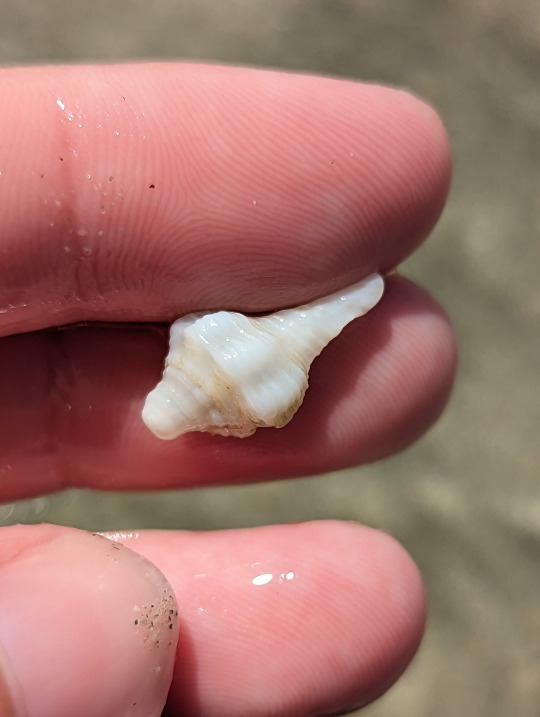
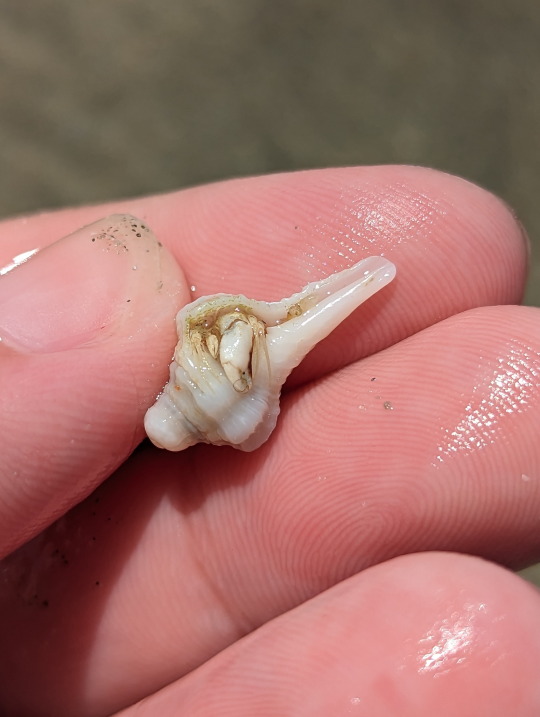
Photos 3-4 - Fasciolariidae sp.

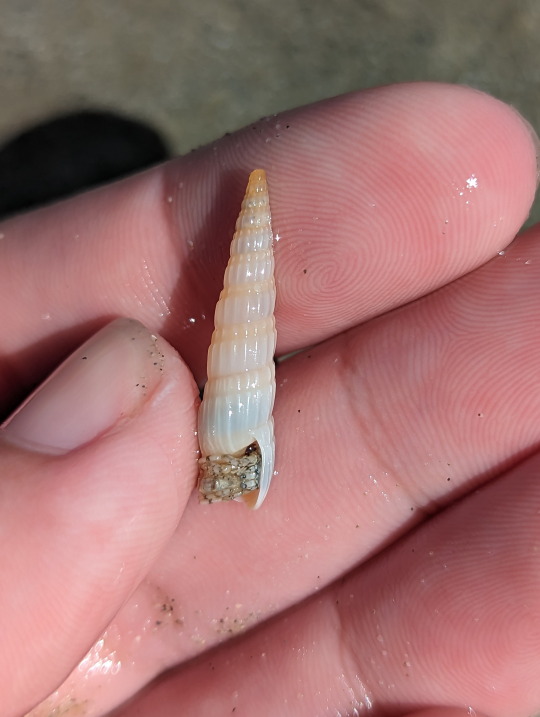
Photos 5-6 - Terebridae sp.
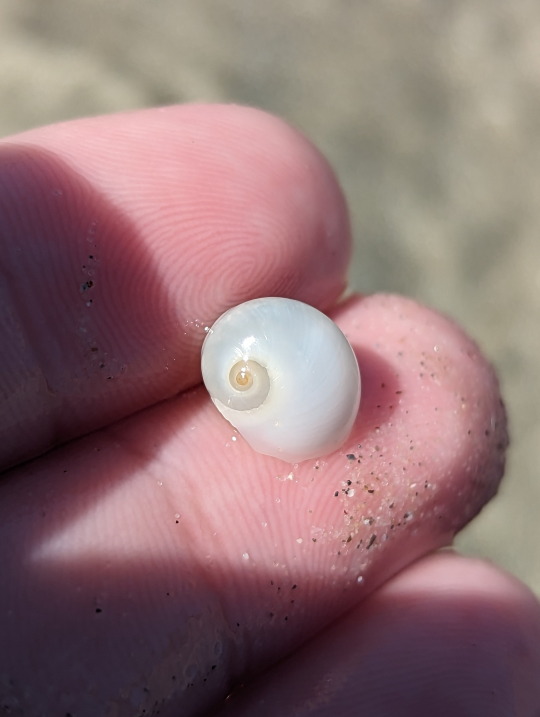

Photos 7-8 - Neverita didyma
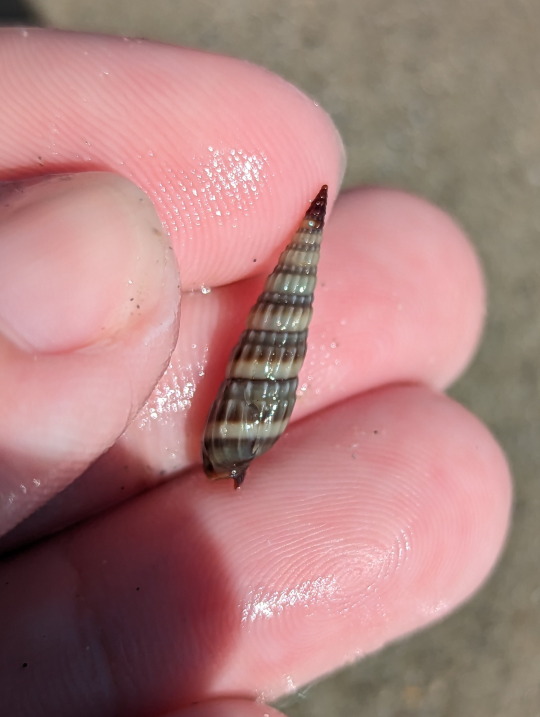
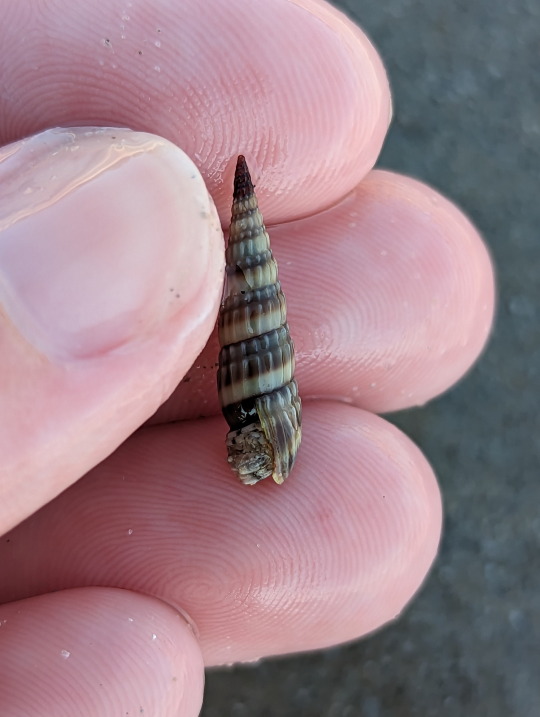
Photos 9-10 - Duplicaria bernardii
More shells washed up on the shores of Woppa.
13/09/23 - Gastropoda spp.
QLD:CQC, Woppa (Great Keppel island), ocean shore
#invertebrates#invertblr#Fasciolariidae#Mollusca#unidentified#Molluscs#mollusks#Caenogastropoda#Caenogastropods#Gastropoda#Gastropods#Terebridae#Auger Shells#Neverita didyma#Bladder Moon Snail#Naticidae#moon snails#Duplicaria bernardii
22 notes
·
View notes
Photo
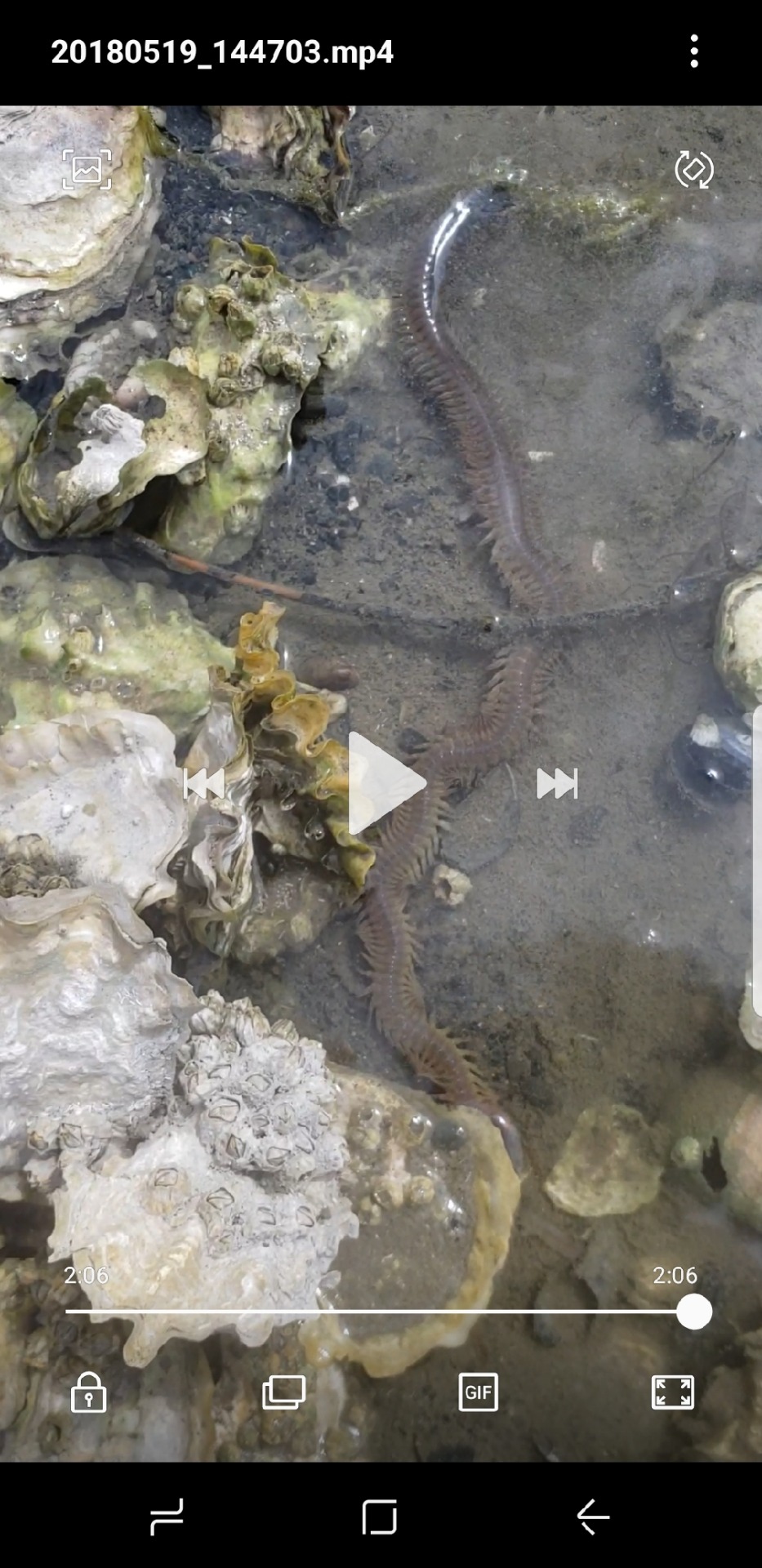
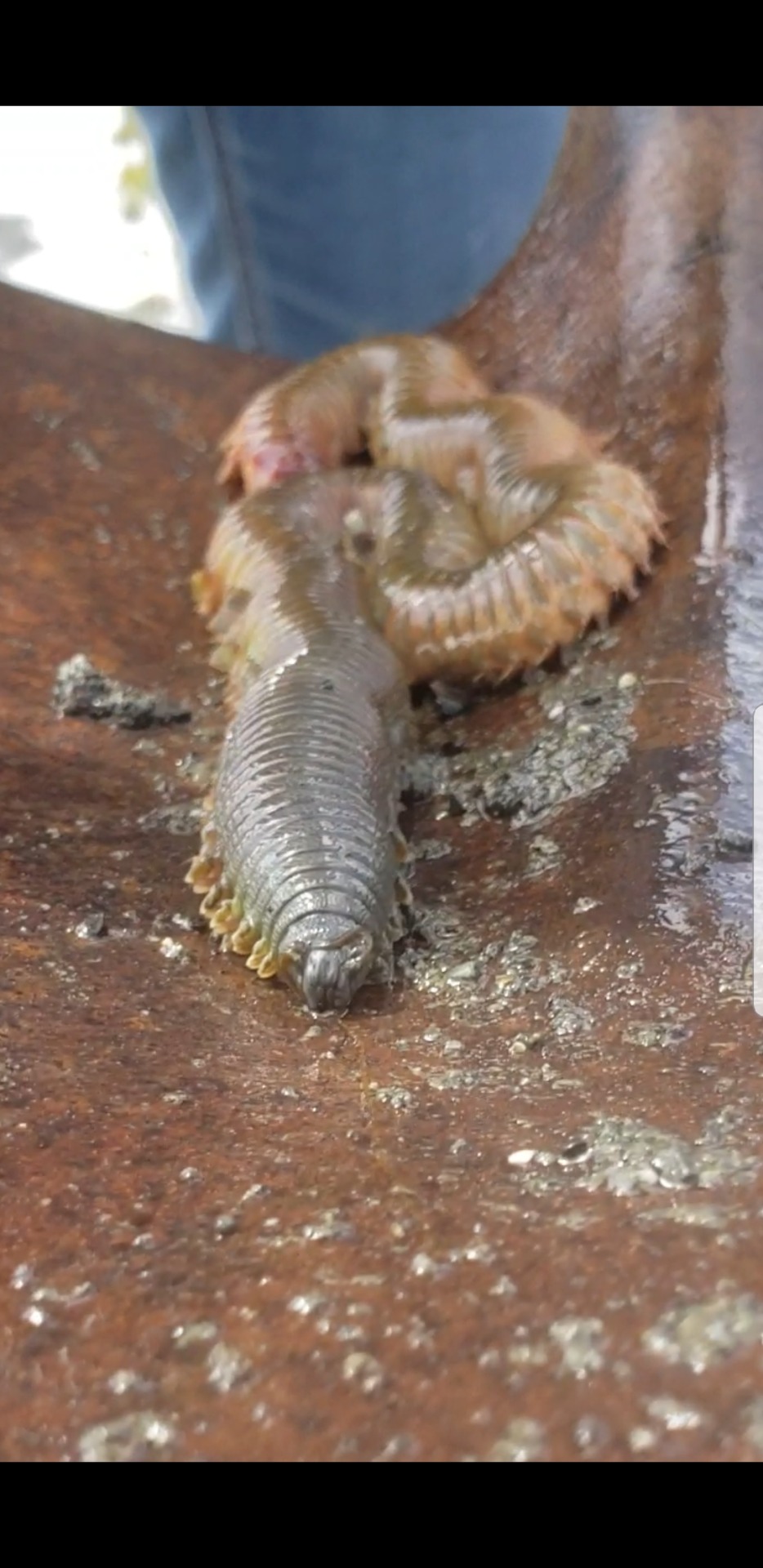





Big scary sea centipede!! (Phyllodocida Nereidae.) Over a foot long and two inches wide. Pictures 2 and 3 show it’s mouth closed, then open.
Ochre Sea Star (Pisaster ochraceus.)
Moon Snail (Naticidae) egg casing (Sand collar.) Rubbery. Made of sand, but can bend without crumbling.
0 notes
Text
Eulimidae - Wikipedia
Eulimidae is a family of very small parasitic sea snails, marine gastropod mollusks in the superfamily Eulimoidea.[1]
Description and characteristics[edit]
These small parasitic snails live on (or in some cases in) the bodies of echinoderms such as sea cucumbers, sea urchins, sea stars, etc. All species lack a radula, in most cases possessing a proboscis which they extend into their host's body cavity in order to feed.[2]
Genera within the family Eulimidae include:[3]
Acrochalix Bouchet & Warén, 1986
Amamibalcis Kuroda & Habe, 1950
Annulobalcis Habe, 1965
Apicalia A. Adams, 1862
Arcuella G. Nevill & H. Nevill, 1874
Asterolamia Warén, 1980
Asterophila Randall & Heath, 1912
Auriculigerina Dautzenberg, 1925
Bacula H. Adams & A. Adams, 1863
Batheulima F. Nordsieck, 1968
Bathycrinicola Bouchet & Warén, 1986
Bonellia Deshayes, 1838
Bulimeulima Bouchet & Warén, 1986
Campylorhaphion Bouchet & Warén, 1986
Chileutomia Tate & Cossman, 1898
Clypeastericola Warén, 1994
Concavibalcis Warén, 1980
Costaclis Bartsch, 1947
Crinolamia Bouchet & Warén, 1979
Crinophtheiros Bouchet & Warén, 1986
Curveulima Laseron, 1955
Cythnia Carpenter, 1864
Diacolax Mandahl-Barth, 1946
Echineulima Lützen & Nielsen, 1975
Echiuroidicola Warén, 1980
Enteroxenos Bonnevie, 1902
Entocolax Voigt, 1888
Entoconcha J. Muller, 1852
Ersilia Monterosato, 1872
Eulima Risso, 1826
Eulimetta Warén, 1992
Eulimostraca Bartsch, 1917
Eulitoma Laseron, 1955
Fuscapex Warén, 1981
Fusceulima Laseron, 1955
Gasterosiphon Koehler & Vaney, 1905
Goodingia Lützen, 1972
Goriella Moolenbeek, 2008
Goubinia Dautzenberg, 1923
Haliella Monterosato, 1878
Halielloides Bouchet & Warén, 1986
Hebeulima Laseron, 1955
Hemiaclis G. O. Sars, 1878
Hemiliostraca Pilsbry, 1917
Hoenselaaria Moolenbeek, 2009
Hoplopteron P. Fischer, 1876
Hoplopteropsis de Morgan, 1916
Hypermastus Pilsbry, 1899
Megadenus Rosén, 1910
Melanella Bowdich, 1822
Menon Hedley, 1900
Microeulima Waren, 1992
Molpadicola Grusov, 1957
Monogamus Lützen, 1976
Mucronalia A. Adams, 1860
Mucronella Ivanov, 1973 (probably a misspelling of Mucronalia)
Nanobalcis Waren & Mifsud, 1990
Niso Risso, 1826
Oceanida de Folin, 1870
Ophieulima Warén & Sibuet, 1981
Ophioarachnicola Warén, 1980
Ophiolamia Warén & Carney, 1981
Paedophoropus Ivanov, 1933
Palisadia Laseron, 1956
Paramegadenus Humphreys & Lützen, 1972
Parastilbe Cossman, 1900
Parvioris Warén, 1981
Peasistilifer Warén, 1980
Pelseneeria Koehler & Vaney, 1908
Pictobalcis Laseron, 1955
Pisolamia Bouchet & Lützen, 1976
Polygireulima Sacco, 1892
Prostilifer Warén, 1980
Pseudomucronalia
Pseudosabinella McLean, 1995
Pulicicochlea Ponder & Gooding, 1978
Punctifera Warén, 1981
Pyramidelloides Nevill 1884
Rectilabrum Bouchet & Warén, 1986
Robillardia E.A. Smith, 1889
Sabinella Monterosato, 1890
Scalaribalcis Warén, 1980
Scalenostoma Deshayes, 1863
Selma A. Adams, 1863
Sticteulima Laseron, 1955
Stilapex Iredale, 1925
Stilifer Broderip [in Broderip & Sowerby], 1832
Subniso McLean, 2000
Thaleia Waren, 1979
Thyca H. Adams & A. Adams, 1854
Thyonicola Mandahl-Barth, 1941
Trochostilifer Warén, 1980
Tropiometricola Warén, 1981
Turveria Berry, 1956
Umbilibalcis Bouchet & Waren, 1986
Vitreobalcis Warén, 1980
Vitreolina Monterosato, 1884
Genera brought into synonymy
Acicularia Monterosato, 1884: synonym of Polygireulima Sacco, 1892
Athleenia Bartsch, 1946: synonym of Oceanida de Folin, 1870
Balcis Leach, 1847: synonym of Melanella Bowdich, 1822
Bessomia Berry, 1959: synonym of Thyca H. Adams & A. Adams, 1854
Chryseulima Laseron, 1955: synonym of Apicalia A. Adams, 1862
Comenteroxenos Tikasingh, 1961: synonym of Enteroxenos Bonnevie, 1902
Cuspeulima Laseron, 1955: synonym of Eulima Risso, 1826
Entosiphon Koehler & Vaney, 1903: synonym of Gasterosiphon Koehler & Vaney, 1905
Eulimaustra Laseron, 1955: synonym of Melanella Bowdich, 1822
Eulimitra Laseron, 1955: synonym of Hemiliostraca Pilsbry, 1917
Eulimoda Laseron, 1955: synonym of Sabinella Monterosato, 1890
Granulithyca Habe, 1976: synonym of Thyca H. Adams & A. Adams, 1854
Halliella Monterosato, 1878: synonym of Haliella Monterosato, 1878
Helicosyrinx Baur, 1864: synonym of Entoconcha J. Müller, 1852
Hersilia Monterosato, 1884: synonym of Ersilia Monterosato, 1872
Hyperlia Pilsbry, 1918: synonym of Scalenostoma Deshayes, 1863
Kiramodulus Kuroda, 1949: synonym of Thyca H. Adams & A. Adams, 1854
Lambertia Souverbie, 1869: synonym of Stilapex Iredale, 1925
Leiostraca H. Adams & A. Adams, 1853: synonym of Eulima Risso, 1826
Lentigobalcis Habe, 1961: synonym of Sticteulima Laseron, 1955
Luetzenia Rehder, 1980: synonym of Robillardia E.A. Smith, 1889
Luetzenia Warén, 1980: synonym of Echineulima Lützen & Nielsen, 1975
Neovolusia Emerson, 1965: synonym of Niso Risso, 1826
Paedophorus Ivanov, 1933: synonym of Paedophoropus Ivanov, 1933
Parastilifer A.V. Ivanov, 1952: synonym of Pelseneeria Koehler & Vaney, 1908
Parenteroxenos A.V. Ivanov, 1945: synonym of Thyonicola Mandahl-Barth, 1941
Rosenia Nierstrasz, 1913: synonym of Pelseneeria Koehler & Vaney, 1908
Spiroclimax Mörch, 1875: synonym of Oceanida de Folin, 1870
Stilimella Laseron, 1955: synonym of Scalenostoma Deshayes, 1863
Strombiformis Da Costa, 1778: synonym of Eulima Risso, 1826
Stylapex: synonym of Stilapex Iredale, 1925
Stylifer Cossmann, 1921: synonym of Stilifer Broderip [in Broderip & Sowerby I], 1832
Stylina Fleming, 1828: synonym of Pelseneeria Koehler & Vaney, 1908
Subeulima Souverbie, 1875: synonym of Bacula H. Adams & A. Adams, 1863
Subularia Monterosato, 1884: synonym of Eulima Risso, 1826
Teretianax Iredale, 1918: synonym of Pyramidelloides G. Nevill, 1885
Teretinax: synonym of Pyramidelloides G. Nevill, 1885
Subfamily Thycinae: synonym of Eulimidae
Turtonia Rosén, 1910: synonym of Pelseneeria Koehler & Vaney, 1908
Venustilifer Powell, 1939: synonym of Pelseneeria Koehler & Vaney, 1908
Volusia A. Adams, 1851: synonym of Niso Risso, 1826
References[edit]
Further reading[edit]
Tryon G. W. 1886. Manual of Conchology. Volume 8. Naticidae, Capyptraeidae, Turritellidae, Vermetidae, Caecidae, Eulimidae, Turbonillidae, Pyramidellidae. 461 pp., 79 plates. page 258, plate 68
Warrèn Anders, 1984, A generic revision of the family Eulimidae (Gastropoda, Prosobranchia), The Journal of Molluscan Studies, Supplement 13 1-96
Vaught, K.C. (1989). A classification of the living Mollusca. American Malacologists: Melbourne, FL (USA). ISBN 0-915826-22-4. XII, 195 pp
External links[edit]
Wikimedia Commons has media related to Eulimidae.
0 notes
Text


Caenogastropoda: Epitonium tenellum


Caenogastropoda: Bembicium auratum

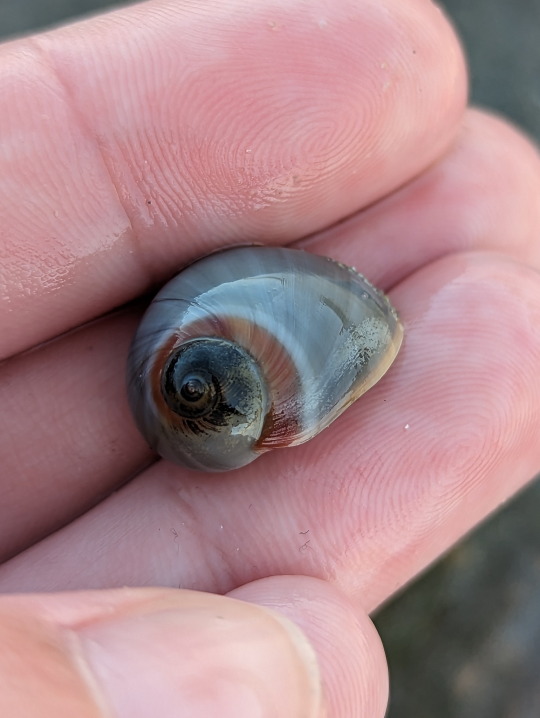
Caenogastropoda: Conuber sp.
Shells collected off of a small beach.
09/09/23
QLD:BRB - Clairview, beach
#invertblr#invertebrates#Bembicium auratum#Gold-mouthed Conniwink#Mollusca#molluscs#Littorinidae#Periwinkle Snails#Caenogastropoda#Caenogastropods#Gastropoda#Gastropods#snails#snailblr#shells#Epitonium tenellum#Conuber#unidentified#Epitoniidae#Naticidae#moon snails
23 notes
·
View notes
Photo

Naticarius orientalis
...is a colorful species of moon snail (Naticidae) that can be found throughout the waters of the Pacific. Like other moon snails N. orientalis is a predator and fees mainly on bivalves and other shelled molluscs. Once N. orientalis finds a prey item it will envelop the prey and bore a hole into its shell using its radula and a secretion. Once the hole is made it will insert its proboscis into the hole and consume it.
Classification
Animalia-Mollusca-Gastropoda-Caenogastropoda-Hypsogastropoda-Littorinimorpha-Naticoidea-Naticidae-Naticarius-N. orientalis
Image: Nick Hobgood
#Naticarius orientalis#Moon Snail#Naticidae#Gastropoda#Mollusca#Pacific#Ocean#Caenogastropoda#Hypsogastropoda#Littorinimorpha#Naticoidea#Naticarius
553 notes
·
View notes
